Coming up with a list of marketing strategies is pretty easy. I mean, everyone knows the basics like social media, SEO, or email marketing. But how do you execute those strategies? And what are the specific marketing tactics that not only work but drive the highest level of growth? In this article, we’ll break down ideas on how you can level up your business with the most popular marketing strategies in 2021. P.S. If you’re new to marketing, we recommend checking out our video on ecommerce terms that touches base on many popular online marketing methods.
Post Contents



9 Online Marketing Strategies for Your Ecommerce Store
1. Social Media
Think managing your social media is as easy as posting content once a day? It’s not. When it comes to social media, your marketing strategy shouldn’t be to just do it. You need to come up with a plan… and one that works.
Every social platform has a specific target audience. If you’re an online fashion retailer, you probably won’t get most of your sales from LinkedIn, which serves more of a B2B (business to business) audience. Instead, you’ll focus on visual platforms like Instagram, Facebook, and Pinterest. Your best engagement will likely be on Instagram. Your best performing ads will likely come from Facebook. And you might drive a lot of traffic from Pinterest (which you can then retarget with Facebook ads).
→ Click Here to Launch Your Online Business with Shopify
So, once you’ve figured out which platforms are worth pursuing for your specific business, it’s time to zero in on your marketing strategies. What type of content should you post? Which tactics should you execute to increase growth? How often should you post?
What are the online marketing strategies you should try for social media? Here are a few:
- Share user-generated content. Your customers and raving fans will post content on social media. Share that content with your audience (with their permission, of course). This’ll help build customer loyalty and help lighten your workload a bit. Dynamite’s popularity is evident with customers using the #dynamitestyle hashtag to share photos of themselves wearing the retailer’s clothing. Dynamite can then repost these photos on their social media as social proof and to showcase different looks with their apparel to better serve customers.
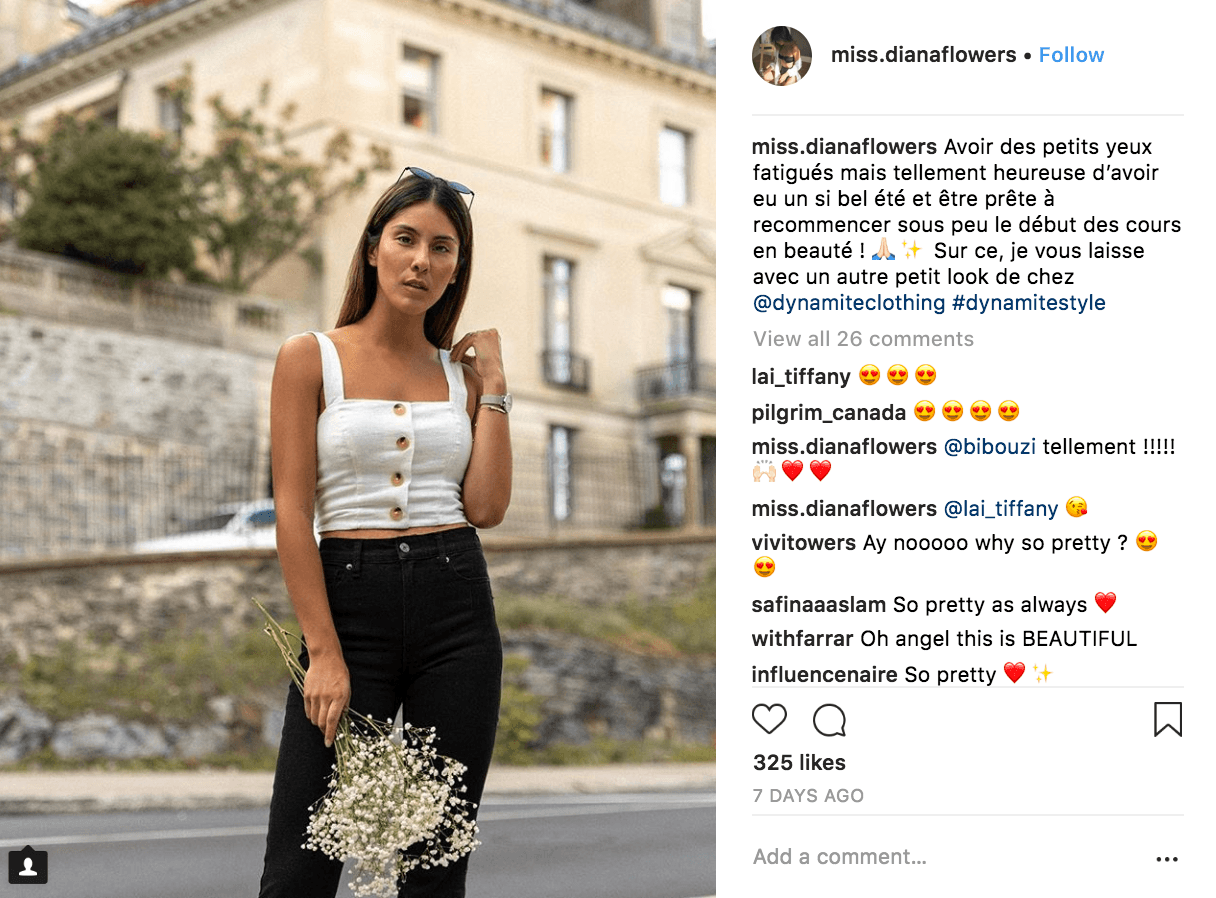
- Who are your social media followers? Take a look at your demographics. If your target audience is aged 22-28 and female they’ll have different needs and interests than if they were 44-55 and female. And they’ll likely be on different social networks too. You can use social analytics tools like Sprout Social to get an in-depth look at your customers.
- Create a social calendar. How often are you posting each day? What type of content are you sharing? If you find Wednesdays get the most engagement, you might choose to share a video on Instagram that day, as videos tend to get high levels of engagement. As you figure out what kind of content your audience responds to, you can better optimize your social calendar for maximum results. The benefit of pre-planning your social strategy is that it helps you maintain consistency and balance in your marketing activities.
2. SEO
What’s more powerful at driving traffic to a website than social media? SEO. It won’t bring you results on day one. But marketing strategies aren’t about short-term plays. It’s about planning for the future growth.
Most online retailers focus on immediate gratification when it comes to building their online stores so they’ll run Facebook ads and call it a day. But if you really want to keep your acquisition costs low, SEO is your best bet.
The thing about SEO is that it’s actually not about picking keywords for your specific niche but going a bit broader. For example, if you have a running store, you wouldn’t only focus on keywords related to running. You’d also focus on keywords related to fitness or weight loss. Why? Because SEO is about acquiring new traffic, not just sticking to your exact audience. By having content around weight loss, you can still introduce the concept of running as a potential way to lose weight. It allows you to target a broader audience who could still be interested in your products.
So what are the marketing strategies for SEO?
- Ever been on a website that shares information that was relevant in 2012? Seriously, how’d that get on the first page? Content freshness is a SEO powerhouse. It requires you to update old content on your website to make it more relevant. So you delete a few sections that are outdated and replace them with content that’s more up to date with current trends. The result? Google rewards you by shooting you up the ranks in search results, giving you a sudden boost in traffic. Updating content is as important as creating new content.
- Add SEO tools like Plug In SEO or SEO Manager so you can regularly do quality checks on your online store’s SEO. While these tools won’t tell you the performance of your work, they will notify you of any SEO errors you make. For example, a common SEO mistake many dropshippers make is adding manufacturers’ product copy on their website. This is called “duplicate content” and can result in a penalization by Google. A penalization could remove your visibility in search engines, lowering your traffic. With these tools, you can do easy check-ups to ensure you’re always optimizing correctly.
- Another marketing strategy that’ll improve your search ranking is to create more web pages. This can be done by adding new products to your online store or writing daily blog posts. You can also create tools, landing pages, ebooks, or other web pages to increase your odds of getting more traffic. Each web page needs to have at least 2,000 words, on average, in order to appear in results. You can always check the top five results for your keyword and use a tool like Web Page Word Counter to see which keywords they rank for and how many words are on the page. This will give you an estimated word count range you can aim for as well as keyword ideas you can include.
3. Content Marketing
One of the most popular marketing strategies right now is content marketing. It helps keep acquisition costs low. But it’s also great at “warming up” leads. What does that mean? It means not everyone will be ready to buy from you the first time they visit your website. However, your content can act as a relationship builder. The more of your content someone sees, the more familiar the potential customer becomes with your brand. Eventually, that familiarity can result in cold, hard cash. Like SEO, it’s a bit of a long-term play. But it pays off.
Content marketing serves multiple purposes beyond acquisition though. It can also educate your customers so that they can improve their performance within the niche. For example, if you run a hair extension store, you can create hair tutorial videos with your hair extensions. This will help your customers look more beautiful using your hair extensions but also keep them using your product. Eventually, when customers want to buy another style, they’ll be more likely to be from you. Why? Because content marketing improves customer retention too.
Content can come in many forms like blog posts, ebooks, videos, infographics, webinars, podcasts, polls, quizzes, templates, and more.
So which marketing strategies should you include in your content marketing?
- When first starting your content strategy, blogging tends to have the highest impact on long-term growth. The way to build out your content is to first focus on writing articles around your exact niche. After building an audience around the niche, move to a wider audience. For example, if you have a running store, start by writing running articles. Once you’ve built an audience of runners, start writing articles about fitness. After you’ve built up an audience of fitness enthusiasts, start creating content around health and wellness. You’ll still want to include articles around running and fitness but while tapping into the broader audiences too. The most successful blogs and websites started as a specific niche and became broader with their audience as they became more successful. Doing the opposite won’t yield the same results.
- Pick content based on who your audience is and what your goal is. For example, if you’re trying to build an email list of women in their twenties, you might create fun quizzes for them to do. Brands like Fabletics use quizzes as a way to get people into their funnel but also create a more personalized experience. If you’re trying to get free traffic from SEO to accumulate a massive audience, you might choose to start a daily blog. If you cater to business people, you might choose to create a podcast so that they can consume your content on their way to work.
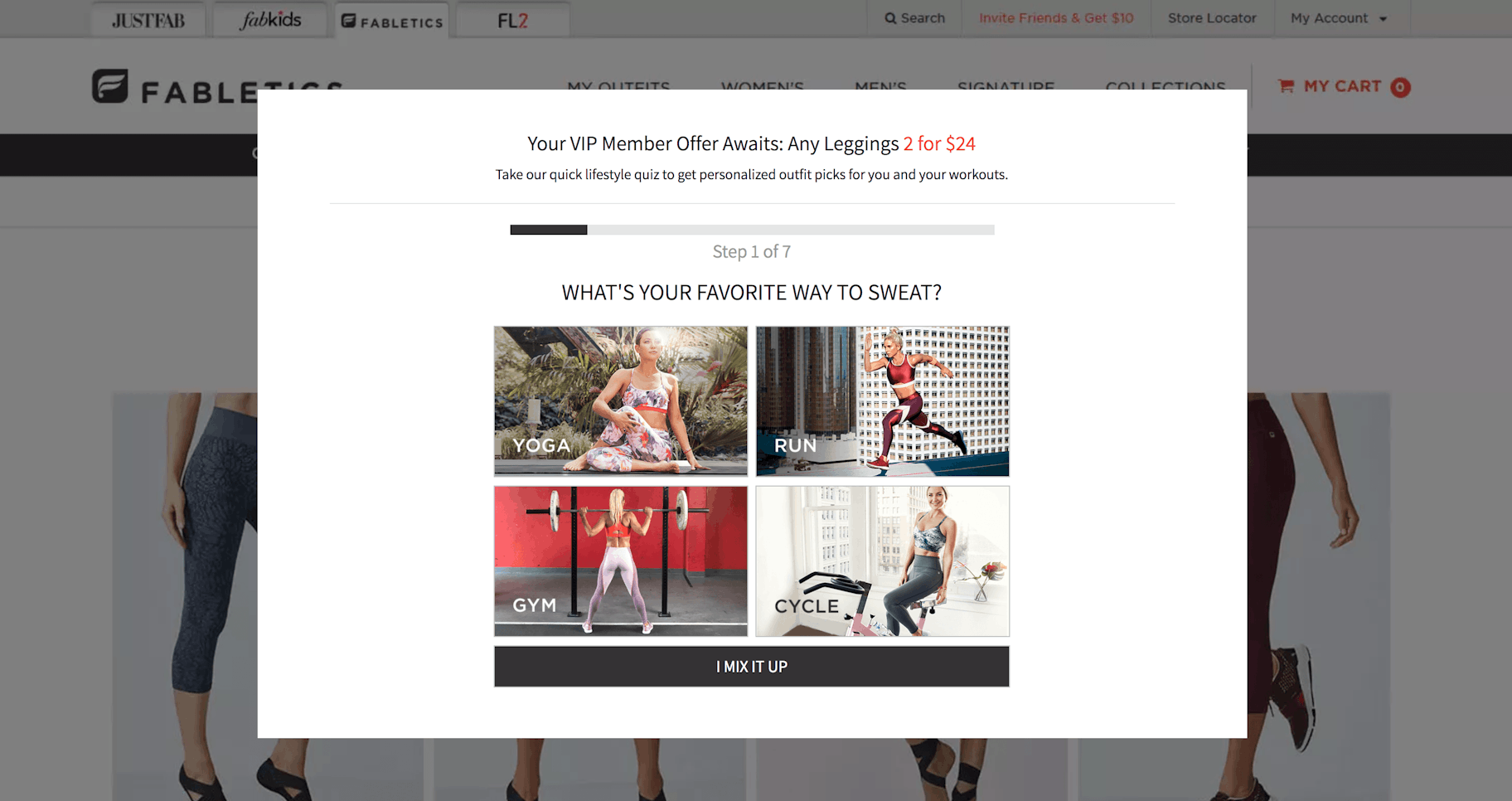
- Do what everyone else does but with a twist. You’ll often hear that the secret to marketing is to be different. But different usually falls flat. If something is unfamiliar or different to someone, they’re less likely to like it. It’s called the mere exposure effect. To really stand out with content marketing, you need to emulate the same concepts as the most popular pieces of content within your niche but add a subtle twist to it. Check out Buzzsumo to see what the most viral articles are. Maybe you create a listicle video with 10 more ideas. Or you recreate viral content but in a different format like an infographic, video, or blog post.
4. Public Relations
The realm of public relations (PR) covers everything from media coverage to branding to content marketing. PR is about maintaining a positive public image and increasing brand awareness. On the one hand, PR is about preventing and putting out fires that can harm a brand’s reputation. And on the other it’s about showcasing the good things your brand does such as corporate social responsibility.
Marketing strategies like PR should always be included in your marketing plan. The reality is your brand’s reputation can be as magical as Disney’s or it can be as tarnished as Takata’s.

Which marketing strategies should you include when it comes to PR?
- Getting media coverage can elevate your brand. The easiest way to do it? Sign up for HARO. Three times a day you’ll receive requests from reporters looking for experts for their stories. In return, you’ll get a link back to your website. You can use a retargeting ad to convert the free traffic from the coverage into sales. You can also increase publicity by doing something newsworthy or pitching the media on your own.
- Host customer appreciation days. Trying out different customer service ideas can help you strengthen your relationships with customers. But the sales aren’t too shabby either. You could easily create a one-day customer appreciation sale with a steep discount to entice customers to shop. Or you can offer a free small gift with every purchase using an app like Free Gifts by Secomapp. Whether you offer a discount or a free gift, it can help incentivize purchases while making your customers happier.
- Monitor what people say about your brand. While customer reviews can paint a picture about what people think of your products, they don’t tell the full story. You can track what people say about your store in a few ways. First, you can set up a Google Alert which will notify you when an article is published featuring the keyword you requested. The keyword could be your brand name. You’ll also want to monitor websites like Yelp, Better Business Bureau, or small blogs to ensure there aren’t any angry reviews.
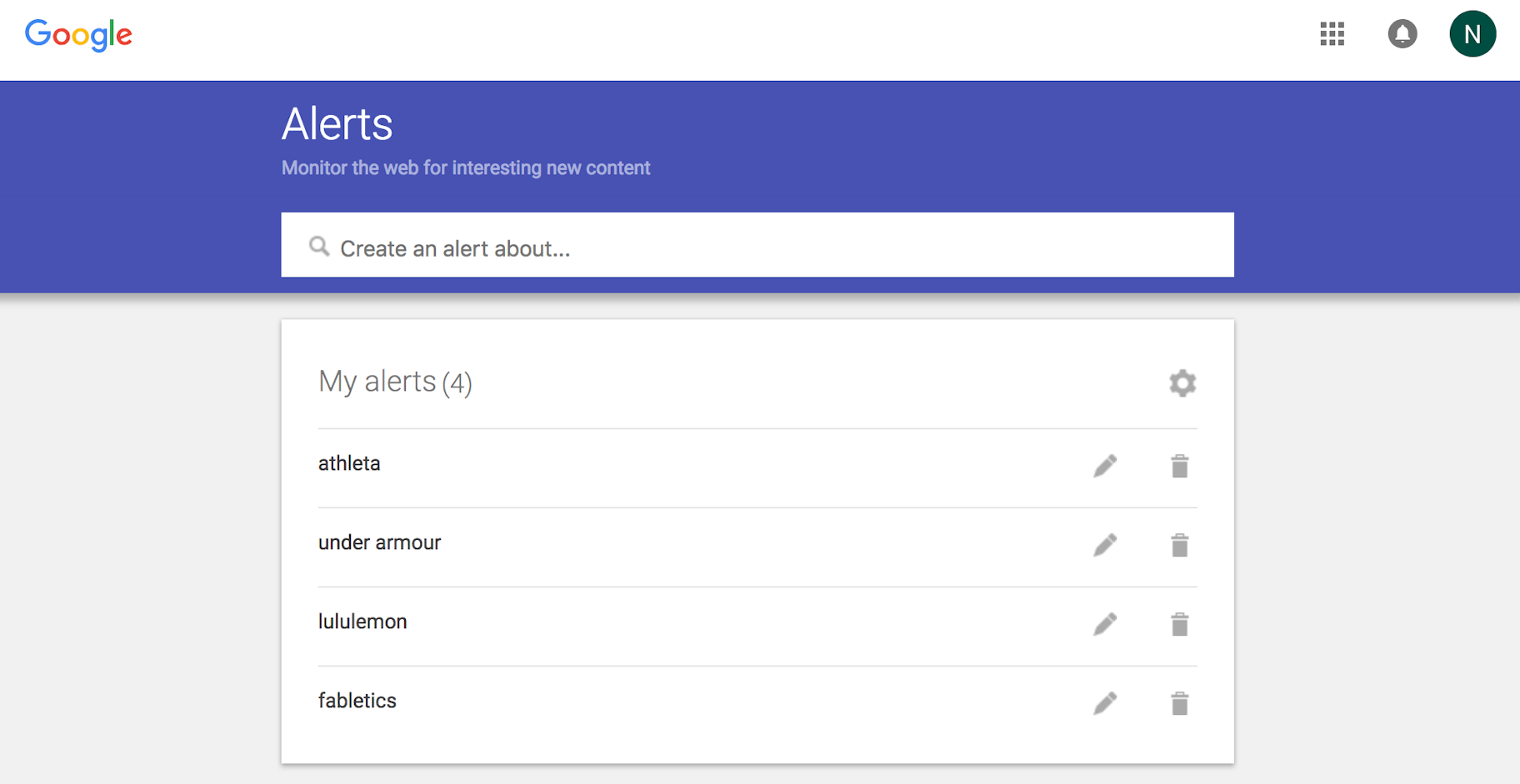
5. Collaborations
Brand collaborations or partnerships can help skyrocket your business. Marketing strategies like collaboration or co-marketing allow you to elevate your business by tapping into another brand’s audience. Most view brands in similar niches as competitors but they can be allies. If two brands serve the same audience but carry different product lines, they can help each other grow by co-creating content, hosting a contest, or launching a joint product together. By leveraging another brand’s audience your marketing campaign can reach a bigger audience, making it an even greater success.
In part 8 of my case study series, I shared how another online retailer in a similar niche gave me a free shout-out on Instagram. While the post didn’t result in any sales, it did result in new followers and website visits. My online store didn’t even have 20 followers at the time and this brand had over 200,000! So collaborations don’t always need to be an even trade. This is a simple way to partner with a brand with a bigger audience without having to offer something extravagant in return.
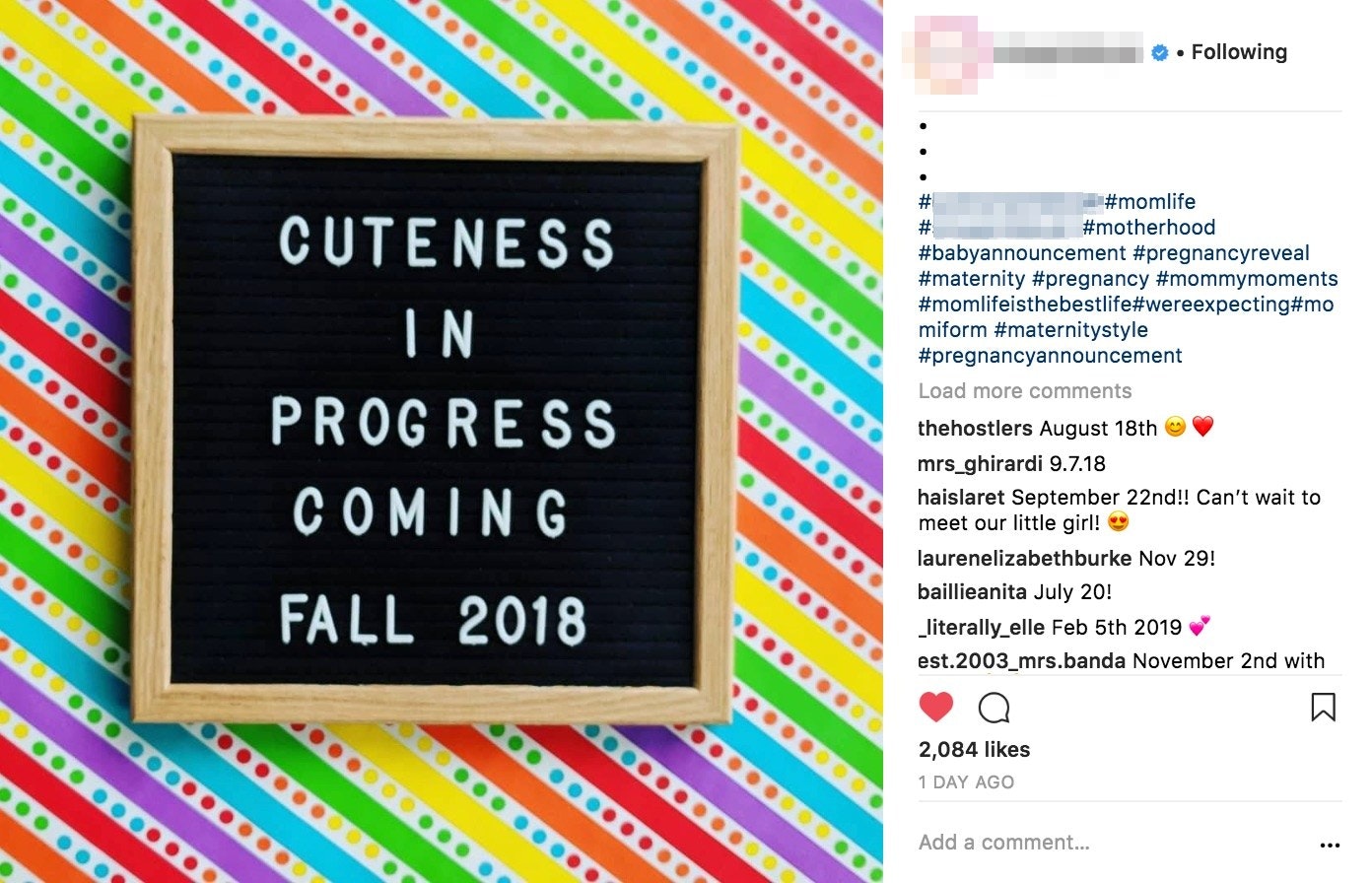
What types of marketing strategies can work well for collaborations and partnerships?
- Influencer marketing allows you to leverage influencers to grow your brand. This works particularly well if you have a small audience and want to make a big splash. When choosing an influencer remember that they need to have an audience that’s proven to convert, showcase your products well, and represent your brand positively. It’s not just about choosing a random attractive person with a high number of followers. Dig deeper into the data.
- Get shared or tagged by a social fan page. Kinda like influencer marketing but instead of leveraging a person you’re leveraging a fan page. From personal experience, I found fan pages to convert better than influencers. This is because fan pages have audiences built up around a passion like dogs or fitness enthusiasts. And so when you promote your product to them, they’re already qualified or at least interested in your niche. Most fan pages include their email address in the bio or you can always DM them on Instagram.
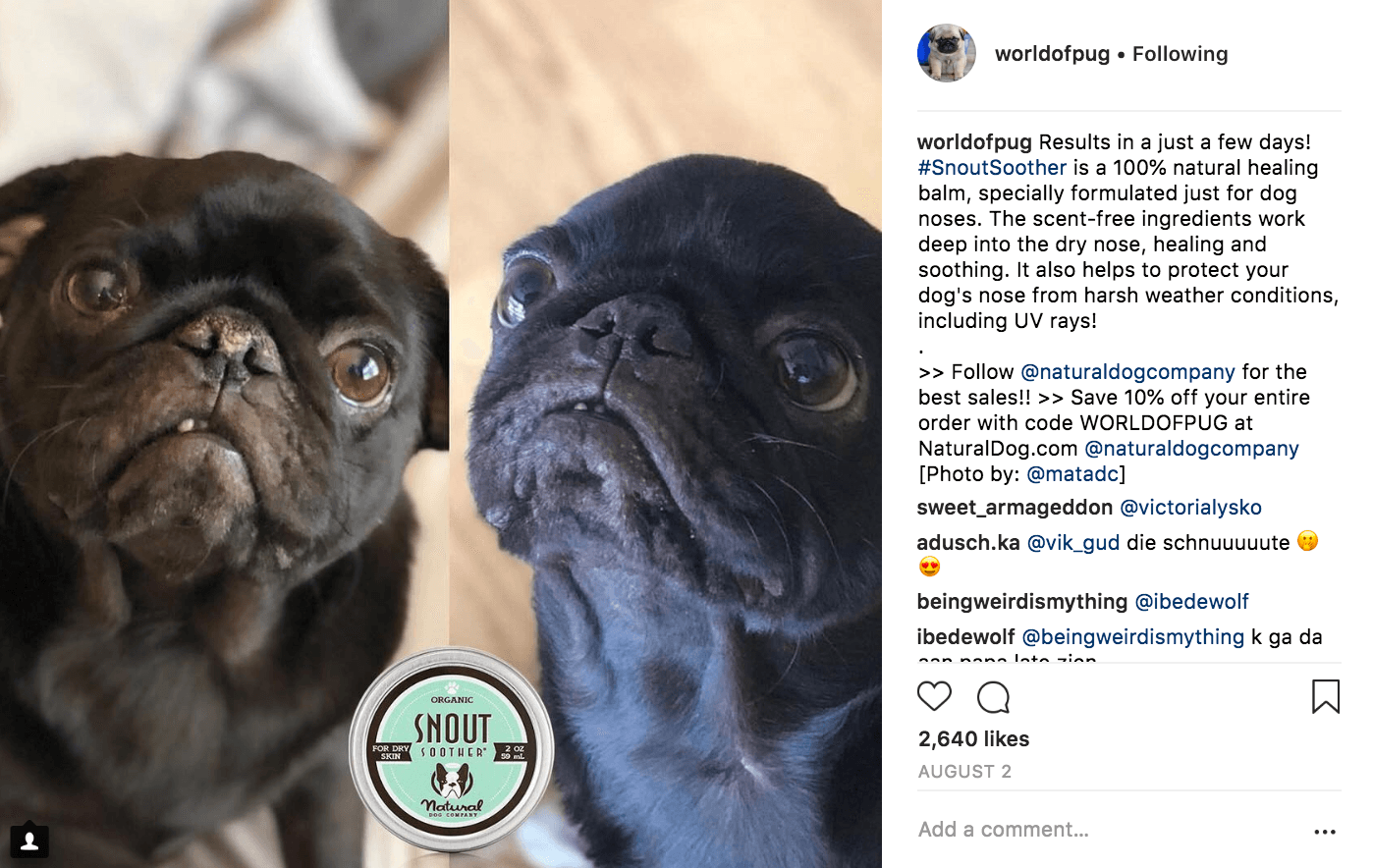
- Feature other brands in your niche in your content. You scratch my back, I’ll scratch yours, amiright? If you consistently feature other influencers in your content, eventually they’ll notice you too. They might reach out to you in the future for a collaboration or partnership. They might even feature you in their content as well. If you feature an influencer in an article, you can reach out to them on social and let them know they’ve been included. This can result in them sharing it with their audience. Helping you get more pageviews back to your website.
6. Email Marketing
For many online retailers, email marketing drives the fastest immediate results in terms of webpage traffic and sales. You can build your email list by asking customers to opt into your marketing when they check out. Or you can add an opt-in form to your blog, homepage, and other popular pages of your website.
The real magic in email marketing comes from the ability to continue to remarket to your audience on an asset you have 100% ownership of. Think of social media followers as rented. Whereas, your entire email list can be moved to another email provider anytime. So you’ll always own your complete list.
What are the top marketing strategies for email?
- The easiest way to increase your email marketing impact is to build a bigger email list. Apps like Spin-A-Sale can be added to your online store, gamifying the process of email list building. The tool allows customers to spin a wheel to get a discount. Customers have to enter their email to spin. But it’s also proven to result in sales as well. I personally tried it on my store and we ended up building a massive email list.

- Create email funnels. An email funnel is a set of sequenced emails. A standard email newsletter might include your best-selling products. However, an email funnel might start by featuring a couple of blog posts about the niche to help customers increase brand familiarity. You might then send an email showing your best-selling products of the week to convert the sale. But you’d only send the conversion email after sending a non-salesy email first. You could also build funnels for your abandoned cart emails.
- Segment your email list. As your email list keeps growing, personalization and segmentation become essential. You’ll have customers who’ve ordered different products on your store. However, by personalizing your emails, you can show them products they may be interested in based on their previous browsing history. This can help make them more likely to buy your products because it’s catered to that individual customer. Apps like Customer Segment Builder can help with this.
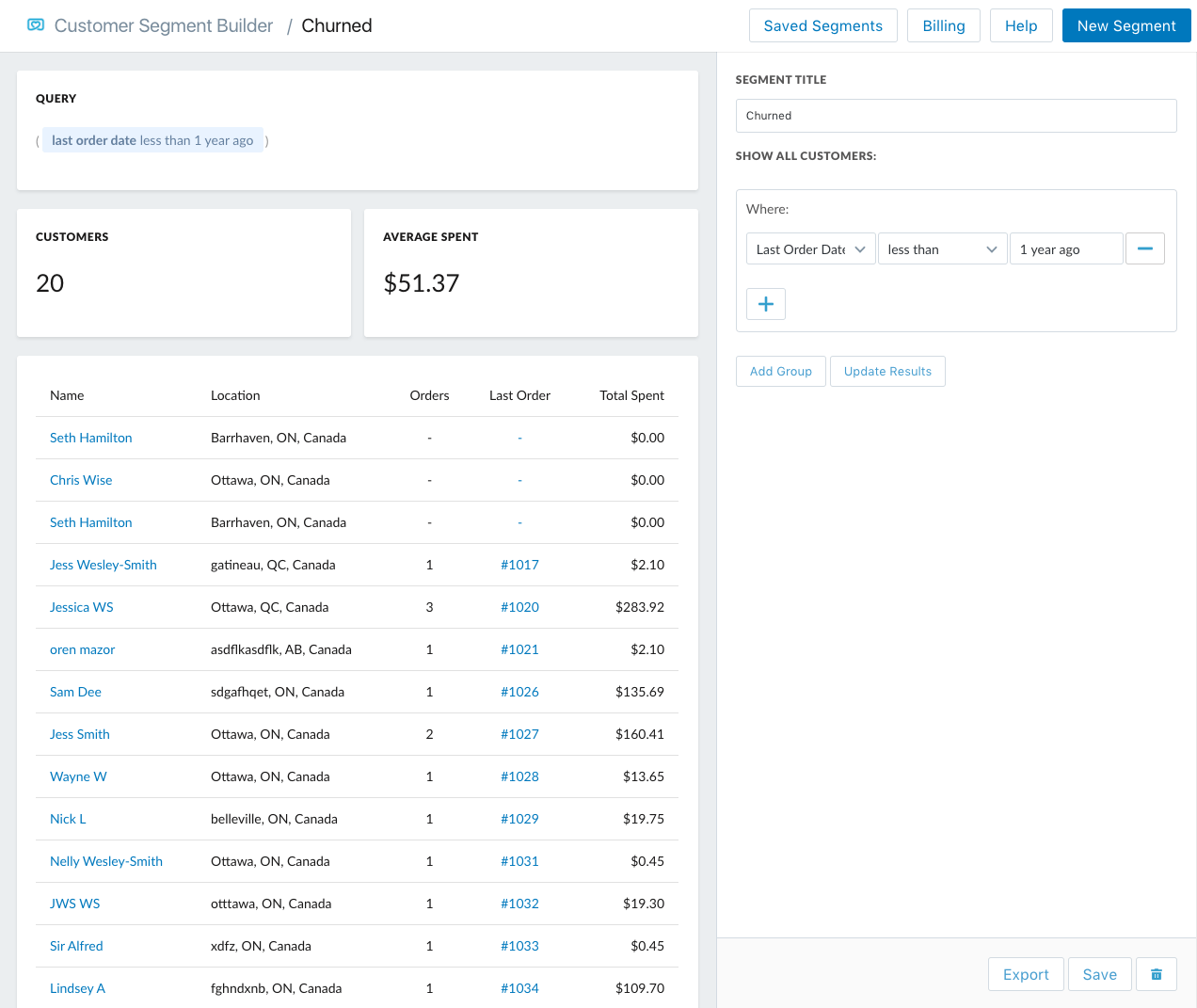
7. Advertising
Advertising is one of the main marketing strategies used for growth. While advertising requires you to pay to drive sales, it’s one of the most effective methods for growing a business financially.
Facebook has been the biggest source of revenue from advertising for online retailers. However, with Facebook removing over 5,000 targeting options, advertisers will now need to get a bit more creative with their advertising. Despite these changes from the biggest advertising powerhouse, advertising will still be main marketing strategy for years to come. However, the way customers are targeted and methods used to target them are likely to evolve over the coming years.
Which advertising strategies work best?
- Run retargeting ads to generate sales from store visitors on their second visit. Most entrepreneurs know that on average customers don’t buy on their first visit. But with retargeting you get a second chance at winning back the customer. All you need to do is add a piece of code called a pixel to your website. This code will track who visited your website, what they viewed, and even what they purchased. You can then run retargeting ads on Facebook or Google to retarget the previous visitor. A retargeting ad should always be running in the background on your store. You can use a Shopify app like Shoelace to automate your retargeting ads.
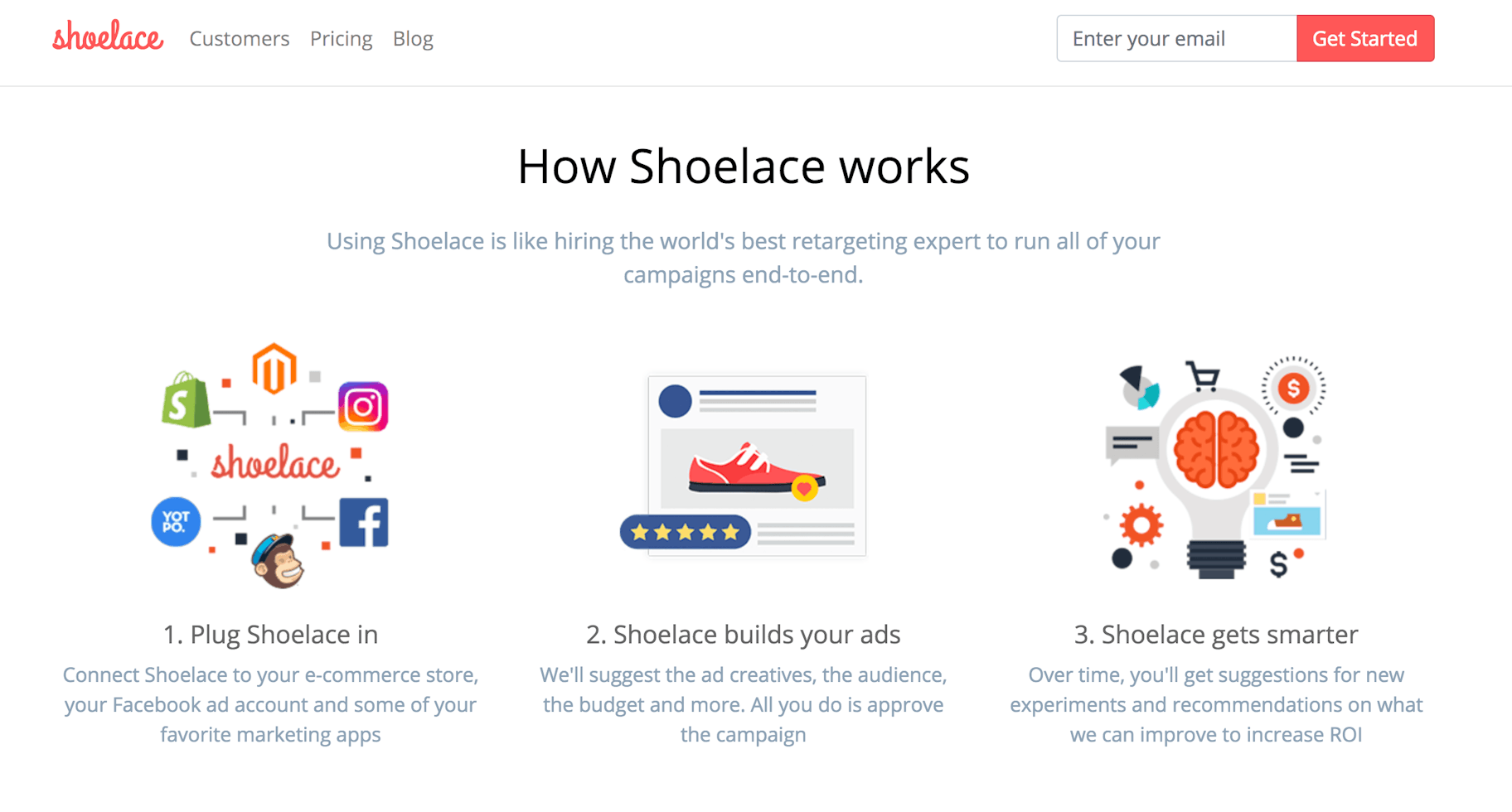
- Experiment with Google Shopping. As a shopper, Google Shopping allows you to find exactly what you’re looking for in their ad based shopping platform. But as a shopper there is one drawback, there isn’t always enough selection.That’s where you come in. There are people who want to find exactly what you’re selling but they just can’t find it. With Google Shopping ads, at least you know they’re ready to buy. They just need to be able to find you first.
- Re-learn Facebook ads. Maybe you’ve always been a Facebook ad master but lately there’ve been so many changes on the ad platform that it’s time to rediscover how to master Facebook ads. With targeting options being changed, it’s time to get a bit more creative when it comes to running your online store’s ads. With a little bit more experimentation, you can continue to create winning ads on the platform.
8. Giveaways
While giveaways and contests are likely not going to be a daily activity in your marketing strategy, they should still be included. Even having four giveaways or contests a year can yield in big returns for your brand. Especially if you use tools like Rafflecopter and Gleam, which allow social sharing and following as ways to sign up for your giveaway. Here’s a sample we used for a giveaway using Gleam:
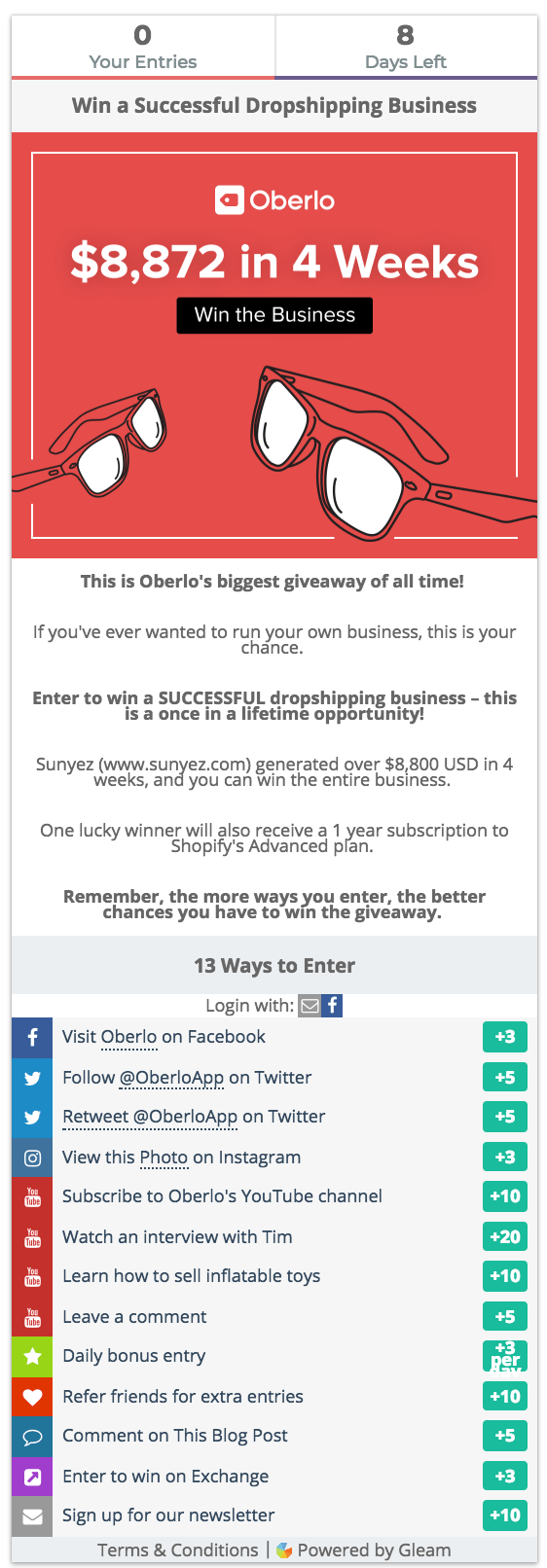
When it comes to giveaways, the best prize isn’t always your own product but a complementary one. This is because you don’t want to associate your product with something people can get for free. However, if you sell makeup products, you might offer a free makeover or free samples like Sephora does.
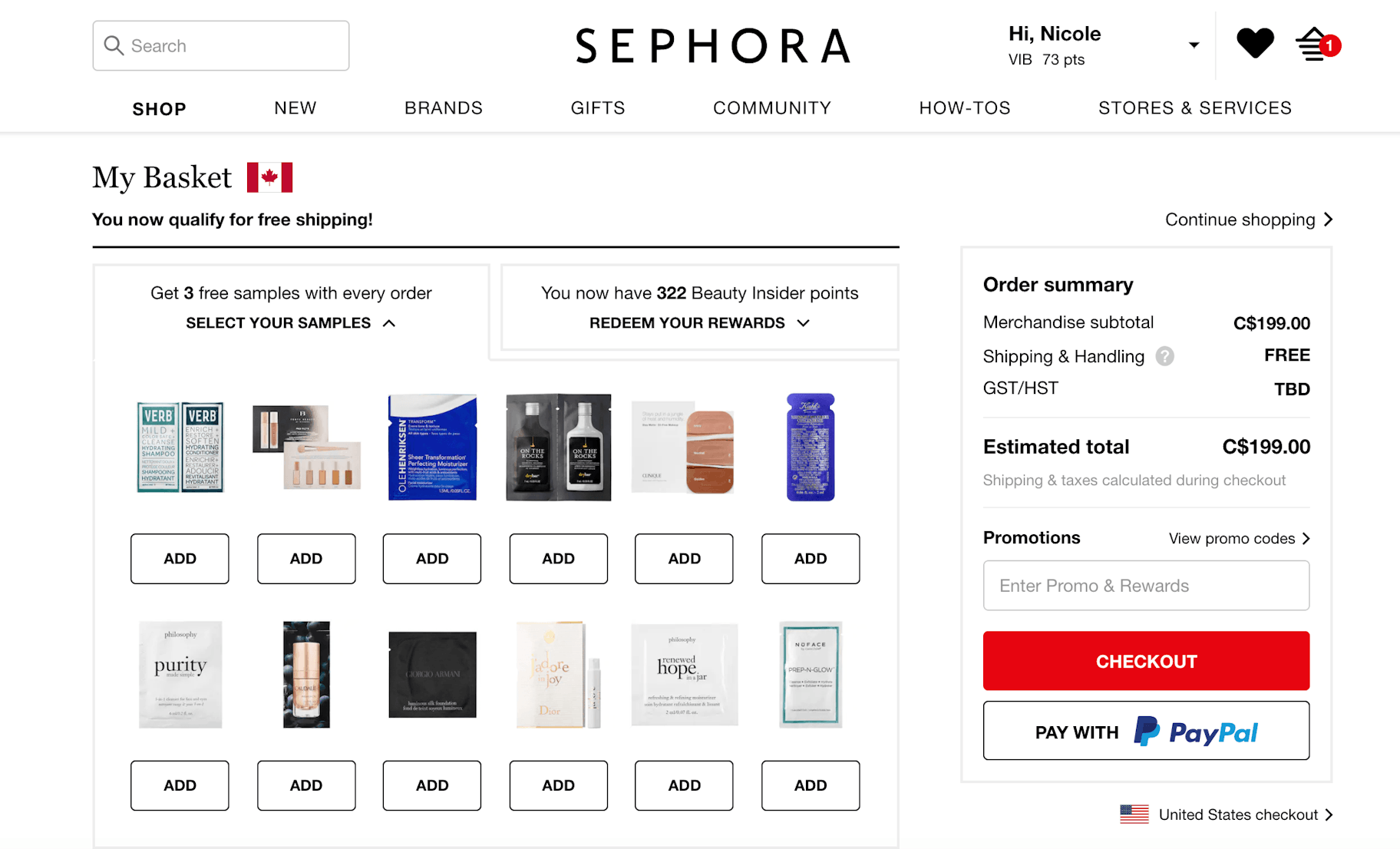
Which marketing strategies should you implement for your giveaways?
- Create a promotional plan. Simply running a giveaway won’t be enough to drive massive impact. How will you get people to enter your giveaway even if you don’t have any followers yet? You can learn how dropshipping pro Tim Kock used Facebook groups to launch his giveaway, which helped him make $8,873 in 31 days selling sunglasses. So, if you just launched your first business, your giveaway can still be successful. But you need to figure out how you’re going to market it first.
- Run a “runner-up” campaign. We all know that the prize winner gets all the glory. This can make the so-called losers feel, well, a little bummed out. A little trick that works really well is to offer a runner-up prize. Your prize can be a small gift card for $5 that they can use on your store. As long as your products cost quite a bit more than $5 and you can still make a profit, this tactic could actually result in some pretty sweet sales since you’re sending the prize to everyone who entered the contest or giveaway.
- Evaluate the giveaway’s performance. Did you gain some new followers but lose a lot of money? Or did you gain new followers AND make money? Did your followers only follow you to win a prize? Or are they genuinely interested in the niche? Evaluating your giveaway can help you determine whether the giveaway is bringing in qualified traffic who converts or if it’s bringing in cheap traffic who want freebies.
9. Video Marketing
Picture posts just aren’t cutting it anymore, folks. Videos are one of the most important marketing strategies for 2021. Fortunately, it’s never been easier to create videos. All you need is your phone. And you could use a free video editing app from the App Store or Google Play to make easy modifications to your videos.
How you create your videos also depends on which platform you’re on. For example, on Instagram, you might use Instagram apps like Boomerang to create a short video loop. On YouTube, you’ll likely be creating widescreen videos.
View this post on Instagram
So, what are the video marketing strategies to try out?
- Create different types of videos. There’s no one size fits all video. Depending on what you sell, you could create a range of videos. For example, behind the scenes, loopable videos, product review videos, vlogs, interviews, webinars, tutorial videos, live streaming videos, etc. You also need to consider the constraints on the platform you post on. Are you creating a five-minute YouTube video or a 30-second Instagram one? You need to cater your video content to the audience and the platform you use.
- Post short videos on social media. You know, unless you’re posting on YouTube or Vimeo. The magic of short videos is that you can post a lot more of them. They take less work to produce, you can post them a few times a day, and you can build a stronger brand presence with them due to the increased frequency. While big production videos can help improve video quality, the short frequent videos can help you increase your brand presence.
- Use Instagram Stories for sales. With Instagram Stories, you can create a quick video with your product that links directly to it. If you have a sizeable Instagram audience, this can convert quite well. Your videos need to be eye-catching and entertaining to keep your viewers watching. But you should also include a call-to-action which can be written or said in the video to get people to swipe to buy the product.
Conclusion
You might’ve noticed that all of these marketing strategies overlap with one another. Content marketing overlaps with SEO, videos can be used in content marketing and social and so forth. The ultimate marketing strategy isn’t about picking one channel, method, or tactic. Combining several marketing strategies is what’ll drive the highest level of growth. Each of these strategies work together to help you achieve your marketing goals. So, if you’re looking to experiment with user-generated content you might also mix in some influencer marketing or run a giveaway to build up your collection of customer photos using some of the specific marketing strategies we recommended in this article.
Which marketing strategies will you be running on your online store?






